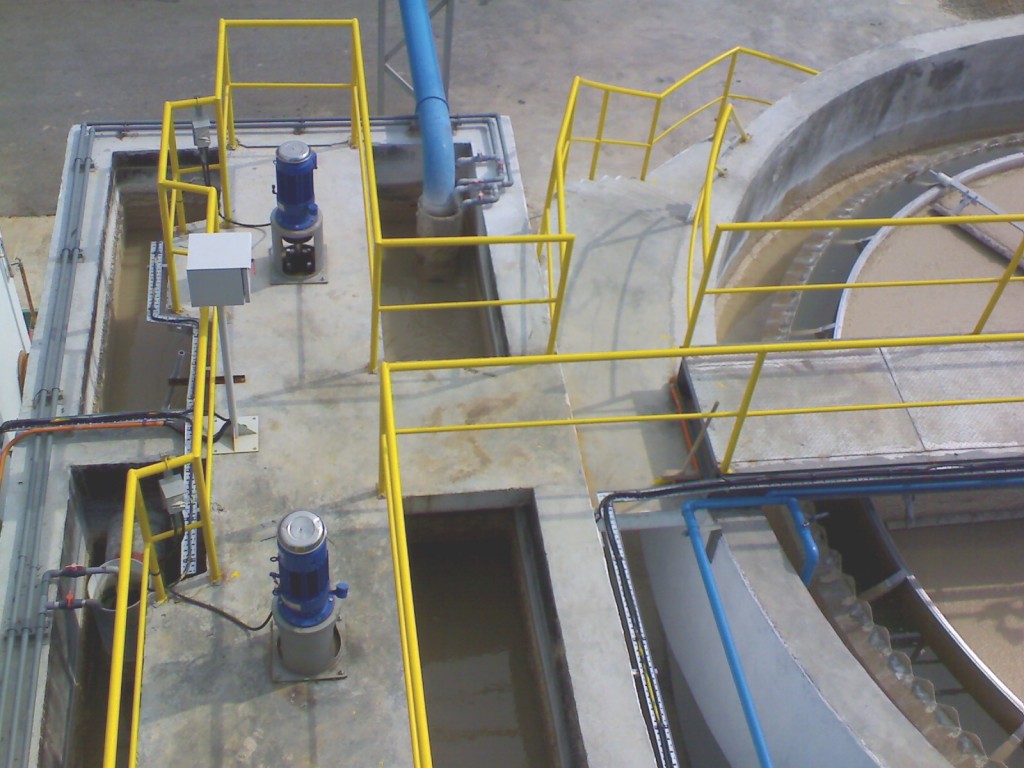Coagulation and flocculation processes involve the de-stabilization and aggregation of suspended particles in the wastewater for subsequent removal in the separation process.
During the coagulation process, chemical coagulants are mixed with the raw wastewater. The coagulants destabilize the colloidal particles by reducing the forces (Zeta potential), keeping the particles apart, which allows their agglomeration. The destabilization process occurs within seconds of coagulant addition. At the point of chemical addition, intense mixing will ensure uniform dispersion of the coagulant throughout the raw wastewater.
During the flocculation process, polymers are mixed with the wastewater. The destabilized particles grow and agglomerate to form large, settle-able flocs. This process occurs under slow mixing as to not break up the flocs.


